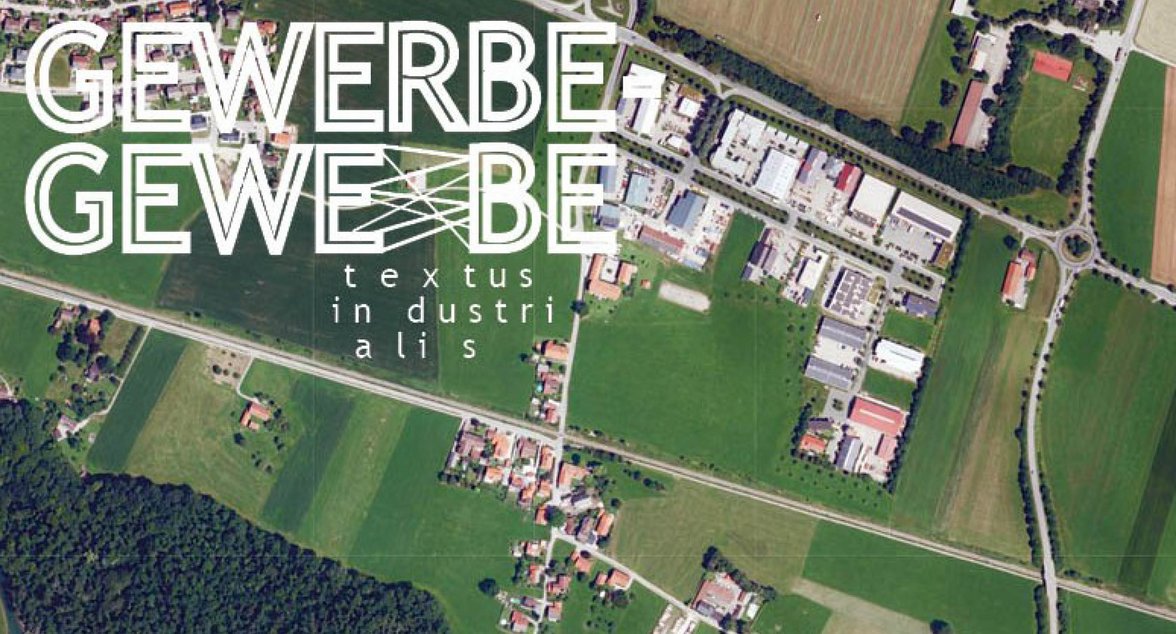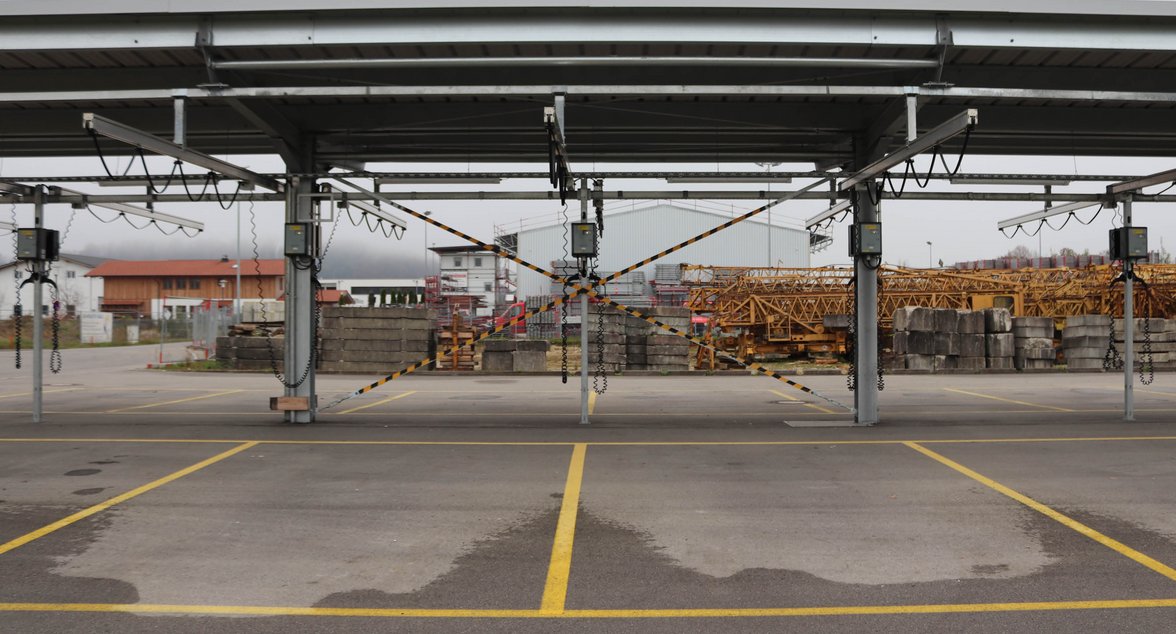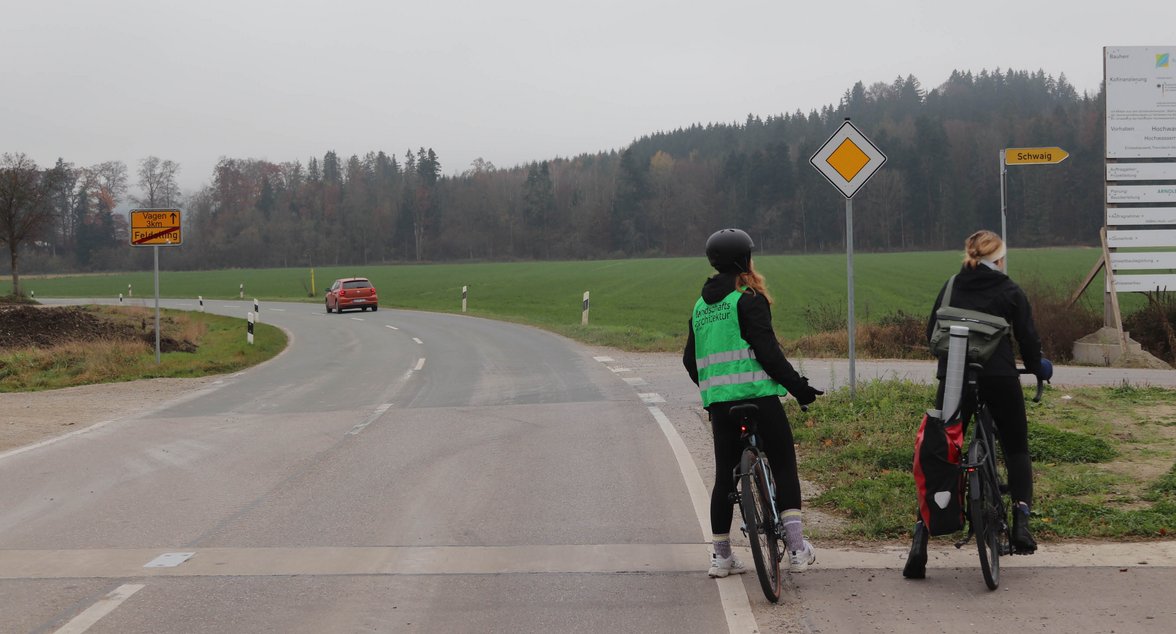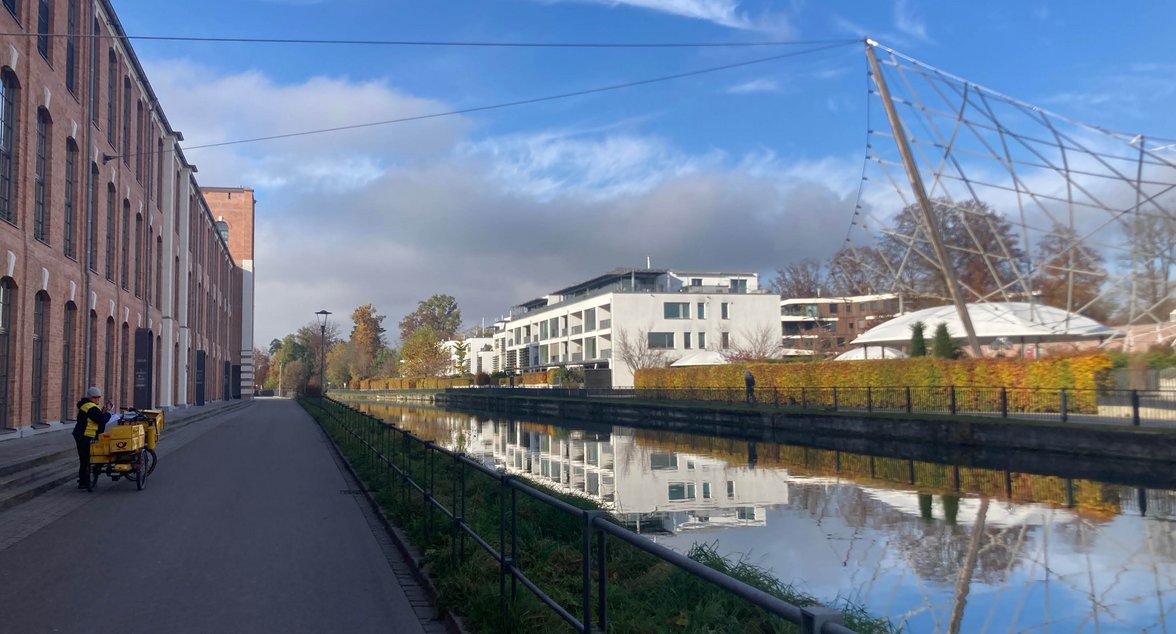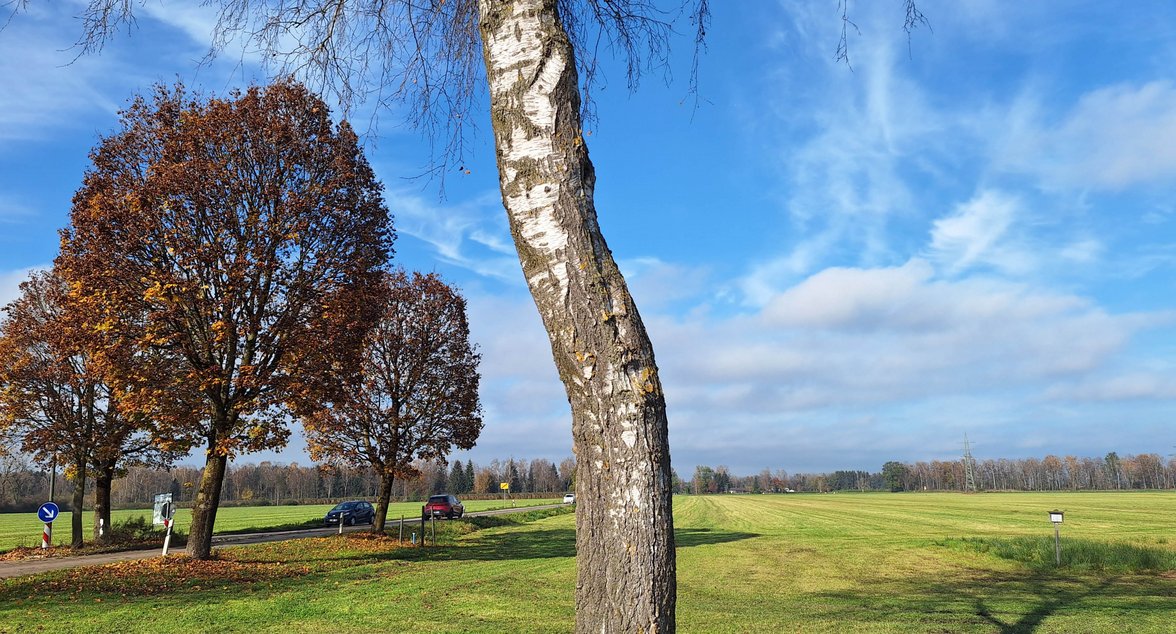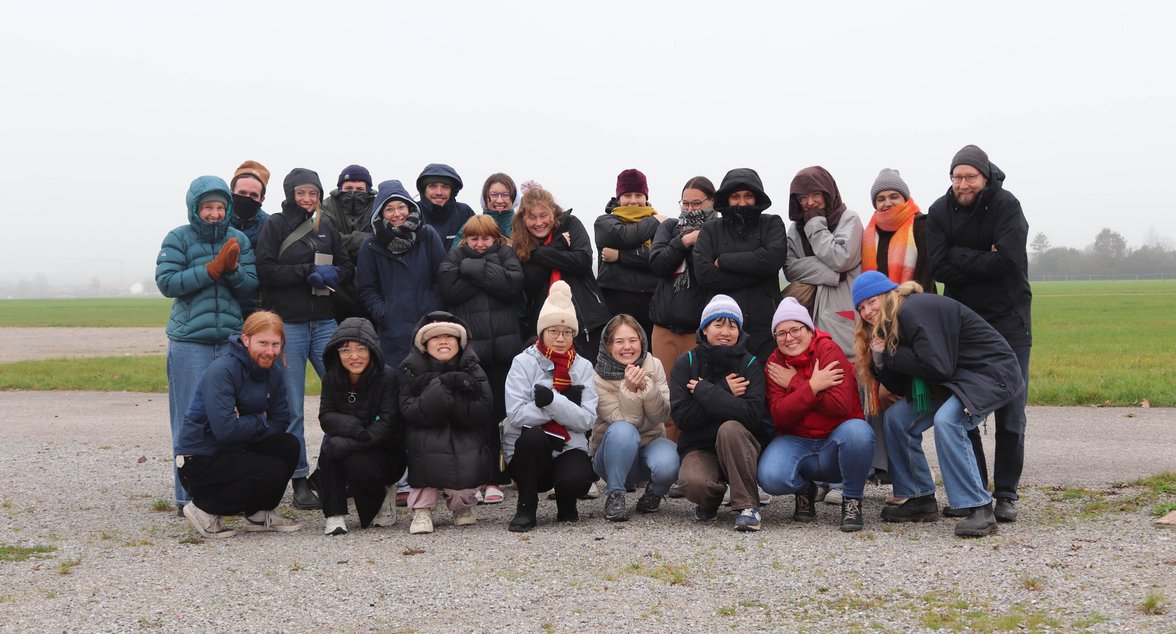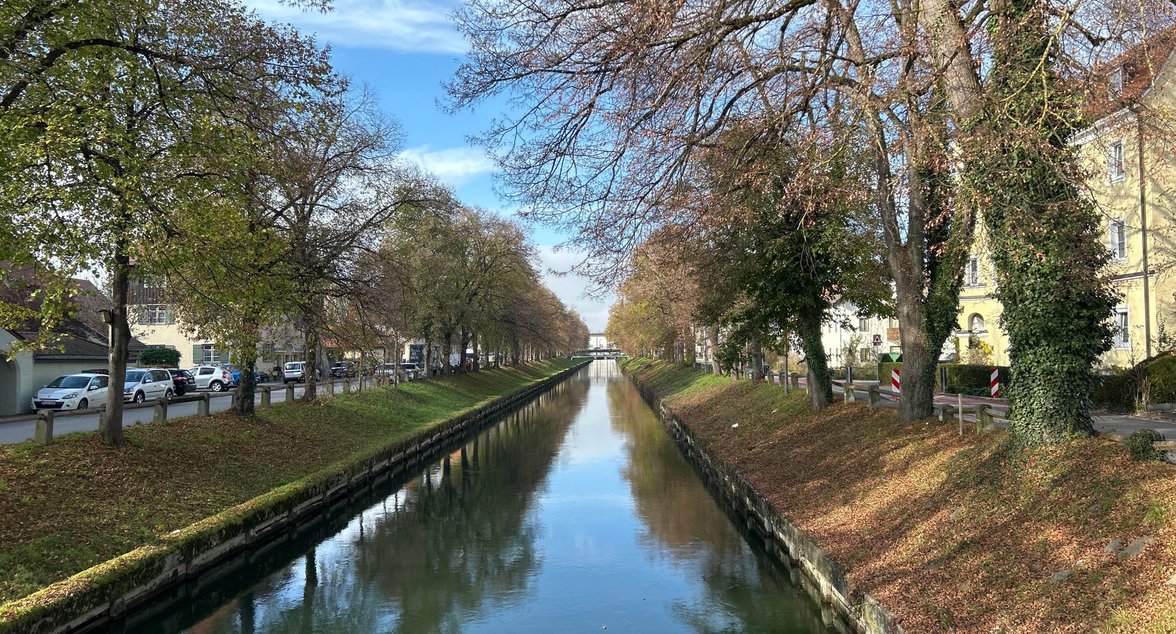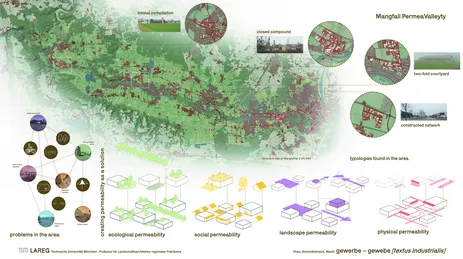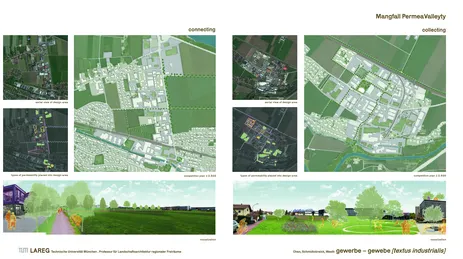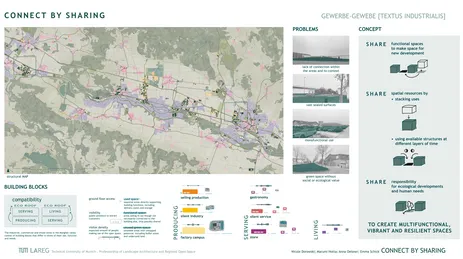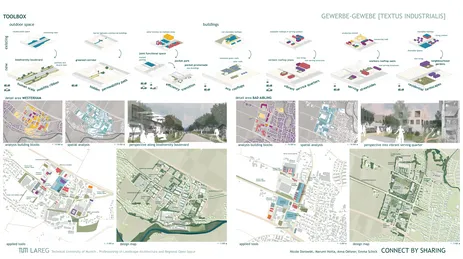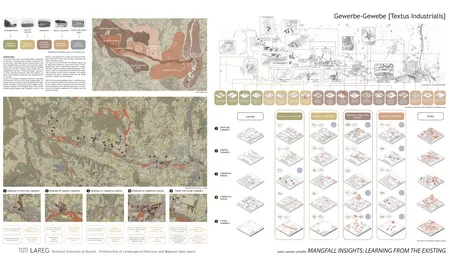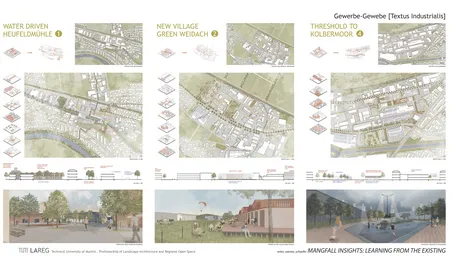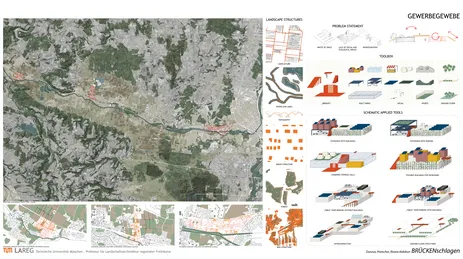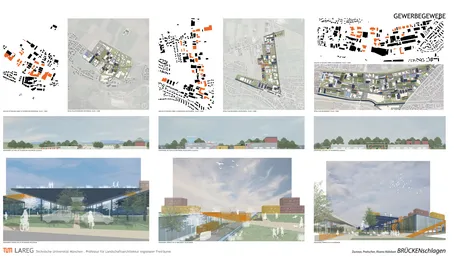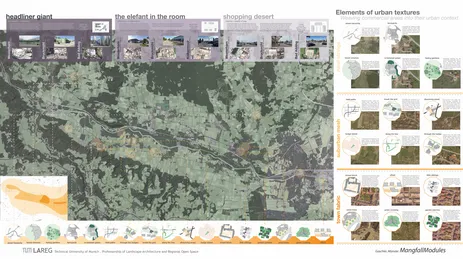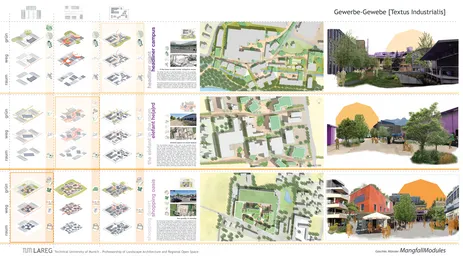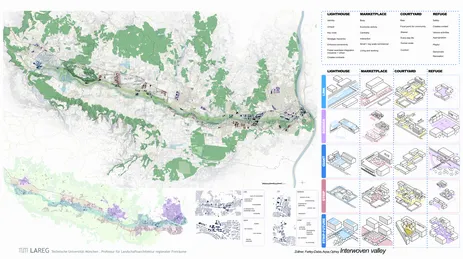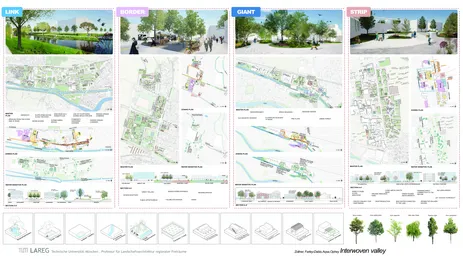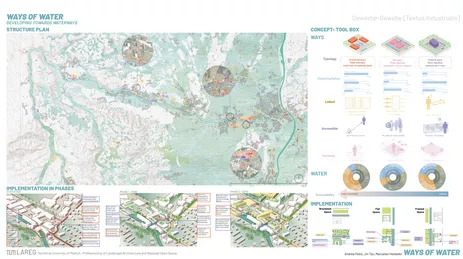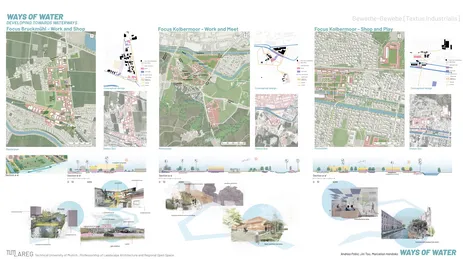In the winter semester 2024/25, the Professorship of Landscape Architecture of Regional Open Spaces, in cooperation with the Government of Upper Bavaria, addressed the future-oriented development of industrial and commercial areas in rural and suburban locations. In the Lower Mangfall Valley, students developed design proposals aimed at reducing land consumption while at the same time enhancing the spatial quality of such areas. Under the supervision of Dr. Julian Schäfer and Paula Erber, they explored key questions: How can commercial areas be densified? How can recreational and leisure uses be integrated? And how can they evolve into mixed-use neighborhoods that also include housing – thereby functioning as integrated building blocks of settlement?
The designs demonstrate that sustainable commercial areas can achieve much more: they can buffer water like a sponge city, generate energy, and in the process create attractive new types of open spaces.
Topic
Even in rural and suburban locations, industrial estates have developed over decades in a kind of shadowy existence, helping to support today's standard of living. In rural areas, there is also a new demand for space for small and medium-sized businesses. Industrial estates are places of consumption and production that have developed from the functional requirements of tradespeople. Due to their separate location from the town and village centres, they also enable 'quiet living in the countryside'. At the same time, the urban planning logic follows the principle of separating living and working. The resulting form lacks a spectrum of possible social, ecological and aesthetic qualities. The commercial sector is one of the drivers of the high level of new land utilisation (land consumption).
Area and analysis
In the project, we analysed various commercial areas in the Lower Mangfall Valley (Feldkirchen-Westerham, Bruckmühl, Bad Abiling, Kolbermoor) - as well as their surrounding landscape. The landscape morphology and settlement structure of the valley is recorded in such a way that the types of commercial areas that have developed here can be categorised. To this end, we visualised both the buildings and the cultural landscape as a texture. Also, historical plans were analysed for lost qualities and starting points for new development are sought in the present. The aim was to understand where no texture has been created, but where buildings have been constructed schematically. The resulted in plans that are based on the drawing style of the Nolli plan on an urban planning level in order to emphasise the spatial quality of the existing buildings and to allow future developments to relate to the existing buildings.
Aim
In each design, a possible future development for the commercial areas of the valley was sketched out contextualistically (according to Rowe)[1] based on the existing building and landscape structures. The aim was to create social spaces and integrate housing in the sense of a mixed area. The designs are show how industrial estates can become urban and village building blocks that become part of the landscape as well as part of the settlement body, thereby developing ecological and climatic added value. Using the stimulant method from 'Collage City' [1, 2], new structures were inserted that create new textures or integrate into an existing texture and thus create a connection between the existing settlement area and the surrounding landscape. The typologies identified were developed further in terms of design, with urban planning work being developed: Volumes were increased, densification took place, open spaces are being utilised by several users at the same time and the open space ultimately became multifunctional. The designs show how commercial areas can be redensified, creating added value for the entire community, how commercial areas can become social centres and how residential and commercial areas can be combined to save space.
[1] see Rowe, Colin und Fred Koetter. 1978. Collage City. MIT Press.
[2] Schäfer, Julian. 2023. Collage Landscape. Dissertation, mediaTUM.
Excursion
Excursion to the Lower Mangfall Valley
The Lower Mangfall Valley is characterized by the beauty of the foothills of the Alps and at the same time the location of highly visible industrial structures. Together we got an overview of the entire area by looking out over the entire valley from hilltops, as well as 'hiking' the industrial sites on foot. We discussed the extent to which texture qualities are still or already present today - and how we can recreate them in the open landscape and on the edges of settlements in order to promote social interaction and encounters.
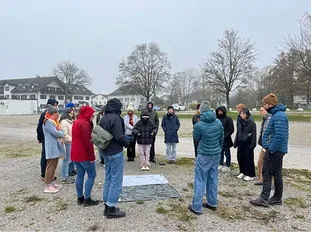
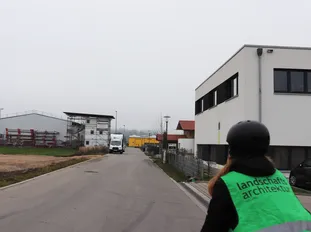
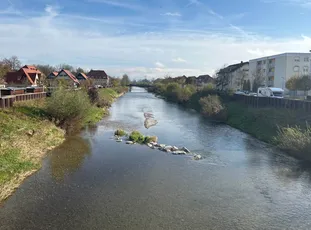
Bachelor-Studio
Students in their specialisation project 'Landscape' interwove cultural landscape structures and urban structures in such a way to create spaces in the sense of the change of aspect (Wittgenstein) that can be read both as components of the commercial areas and as structures of the surrounding landscape.
Master-Studio
In addition, the master's studio designs should conceptualise and design how the areas must be adapted to climate change in a forward-looking manner. As an integrated theoretical elaboration, it must therefore be demonstrated how a rainwater and energy system will function for the areas and how general ecological added value will be created.
